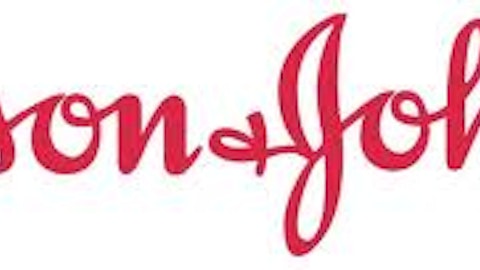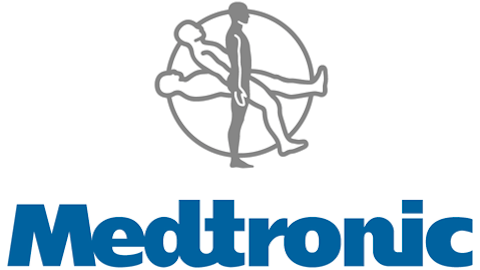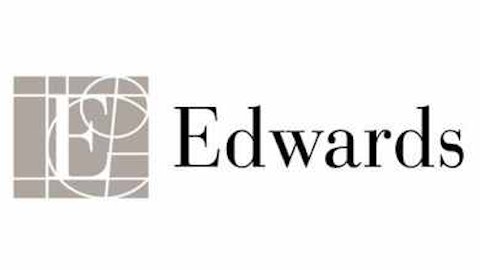
JNJ’s role
When most people think of pharmaceutical company Johnson & Johnson (NYSE:JNJ), they probably think Tylenol. Many would be surprised to learn that the medical devices and diagnostics (MD&D) business accounted for more than 40% of J&J’s sales in 2012. It’s a $360 billion market, and Johnson & Johnson (NYSE:JNJ) competes in 35% of it, according to Gary Pruden, the pharmaceutical giant’s worldwide chairman of the global surgery group,
speaking at a recent conference.
The projected growth rate for the MD&D market in the five-year period leading up to 2016 is 3%-6%, noted Pruden. The modest projected growth rate is a result of heightened uncertainty surrounding the global economy, heath care and regulation. Nonetheless, JNJ is investing billions of dollars in research and development, which underscores its commitment and expectations for this space.
Emerging markets push
In the emerging markets, the medical devices segment is growing at a faster clip than the developed markets, and JNJ is seeking to capitalize on that opportunity. Since 2000, JNJ’s MD&D sales in China have grown from $40 million to $1 billion in 2012. Its recent $19.7 billion cash and stock acquisition of Synthes is helping to facilitate growth in emerging markets.
Johnson & Johnson (NYSE:JNJ) further divides its $27.4 billion MD&D segment into three categories — global surgery, global medical solutions and global orthopedics and neurology. Some 60% of sales in the global surgery group are generated outside of the U.S. and 20% come from the emerging markets, although the company hopes to increase emerging markets sales to 30%.
Earlier this month, Kalamazoo, Michigan-based medical technology company Stryker Corporation (NYSE:SYK) finished its acquisition of Trauson Holdings Company, a trauma equipment manufacturer in China that competes in the spine market. The addition is expected to help Stryker Corporation (NYSE:SYK) expand its presence in the emerging markets. The company expects to increase its sales from emerging markets from 6% to 7% as a result of the deal, according to a recent Cowen Group conference.
Months ago, Stryker Corporation (NYSE:SYK), which has had some struggles in its European business, appointed Kevin Lobo, who led the orthopedics unit, as chief executive officer. He beat out Curt Hartman, the CFO who also served as the interim CEO for much of 2012, for the job. On March 1, the company announced an accelerated share repurchase program in which it will buy back $250 million of its stock. It is part of share buyback program that is already in place that was increased to $1 billion last year. Shares of Stryker Corporation (NYSE:SYK) are trading close to their 52-week high, and the stock is up 7% year-to-date.
Medical device maker Boston Scientific Corporation (NYSE:BSX) , which just entered the third-year of a corporate restructuring, similarly wants a bigger piece of the emerging markets pie. The company, which generated $7.2 billion in sales in 2012, considers itself “undersized” in the emerging markets, which currently generate 4% of total revenues, according to chief financial officer Jeffrey Capello, speaking at a recent RBC Capital Markets Conference. Boston Scientific Corporation (NYSE:BSX) hopes to more than double the size of sales deriving from the emerging markets over the next five years.
For all its struggles, as 4Q and 2012 revenues and net income didn’t measure up to 2011 levels, Boston Scientific Corporation (NYSE:BSX) generates about $100 million in free cash flow each month. The company just launched a $1 billion share buyback program, and expects to use future cash either for buying back additional shares or to fund acquisitions.

JNJ’s Woes
It’s not all smooth sailing at JNJ, either. A Johnson & Johnson (NYSE:JNJ) subsidiary was recently forced to recall a knee replacement device after the U.S. Food and Drug Administration said the device could lead to problems such as an infection or even death. Incidentally, the device is a product of the DePuy Synthes Companies of Johnson & Johnson.
Shares of Johnson & Johnson (NYSE:JNJ) are trading near a 52-week high, and the stock has a trailing price-to-earnings ratio of about 20. It’s fair to say that an investment in Johnson & Johnson (NYSE:JNJ) is also an investment in its MD&D business, which could be a catalyst for growth in the coming years. If the company makes any drastic changes, such as to separate any of its businesses, that would be a game changer.
Surviving
All three of the aforementioned stocks that participate in the medical device market are surviving. Boston Scientific is up 25% since last year, and perhaps the new CEO could help this trend to continue. Conversely, there is a lot of short interest in Stryker, according to a recent Forbes article. It’s a volatile group that trades in a market plagued with uncertainty. As long as these companies continue to capture market share from the emerging markets there is a catalyst for growth, which could serve as a reward to shareholders.
The article Are These 3 Stocks Survivors? originally appeared on Fool.com and is written by Gerelyn Terzo.
Copyright © 1995 – 2013 The Motley Fool, LLC. All rights reserved. The Motley Fool has a disclosure policy.




